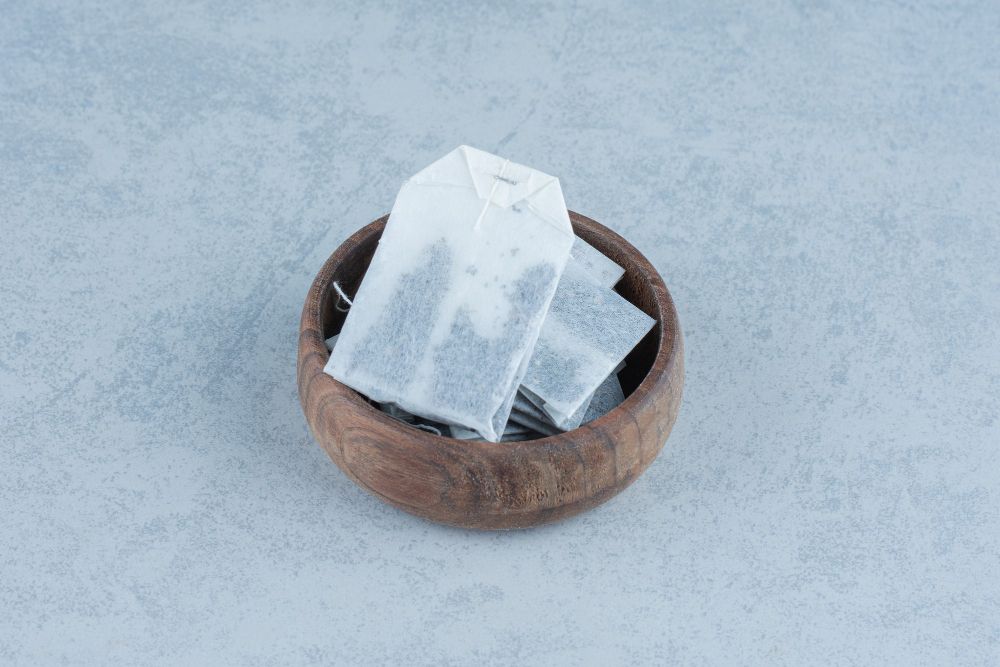

Book Now to Experience
F8 Hair Regrowth Treatment
1 Minute Self-Registration
Date should not be before minimal date
Author: Leila Tan|Updated: 23 July 2024
Hair loss is a common problem that affects both men and women. Fortunately, there are many effective hair loss treatments available, including medication, hair transplant, and laser therapy. Learn more about the different options and which one may be right for you.

1
Introduction to hair loss
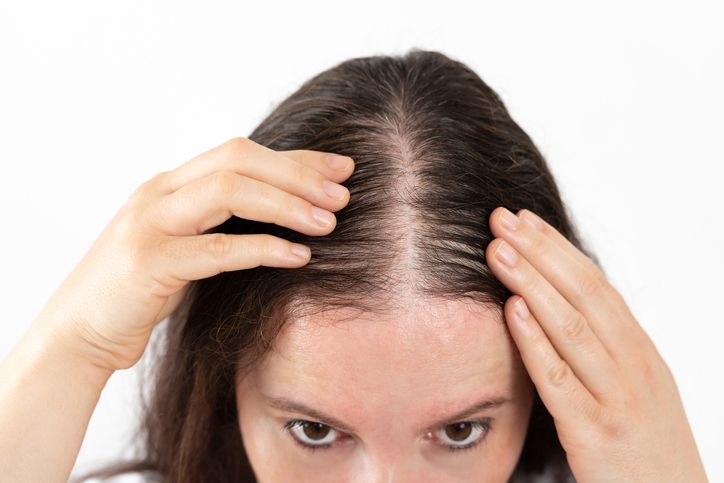
Alopecia is the medical name for hair loss and is one of the most prevalent conditions that dermatologists identify and treat. The American Academy of Dermatology (AAD) states that between 50 and 100 hairs are typically lost each day. Your head has roughly 100,000 hairs, so that slight or slow hair loss is not visible. In most cases, new hair grows in to replace the lost hair, although this isn't always the case. Hair loss can occur suddenly or gradually over many years. It could be either transient or permanent, depending on the underlying cause.


2
Hair Growth Cycle
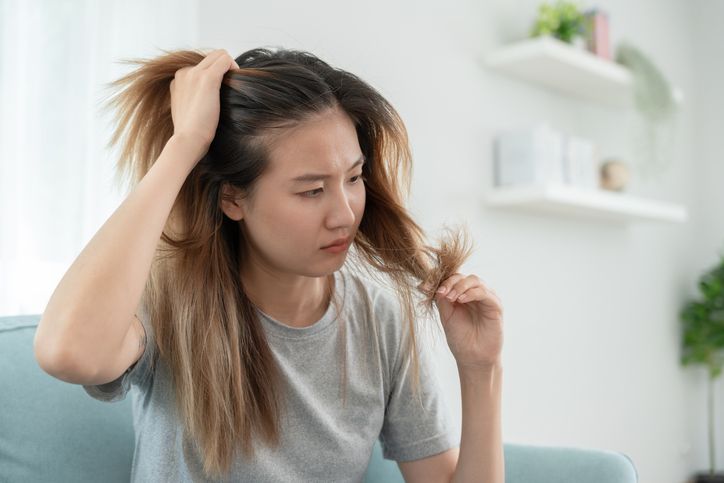
Although the process of hair growth and loss may appear to be straightforward, it actually consists of four separate phases. It is simple to observe how hair develops during these stages of hair growth and what may be done to prevent or treat premature hair loss.
Anagen, catagen, and telogen, the first three phases, cover the development and maturation of hair as well as the activity of the hair follicles that create individual hairs. The "old" hair sheds at the final phase, known as exogen, but often a new hair is preparing to take its place. The timing of each phase varies on factors like age, diet, and general health.
Anagen: Growing phase
The Anagen Phase, sometimes referred to as the "Growth Phase" or "Active Phase," is when the cells in the root of your hair are dividing the fastest, resulting in the formation of more new hair. This is known to be the longest phase for where this period lasts between three and five years, yet for some people, a single hair may continue to grow for seven or more years. Your hair follicles release hairs during this anagen phase which will keep growing until they are trimmed or until they reach the end of their life cycle and fall out. Approximately 90% of the hairs on your head are in the anagen phase at any given time.
Catagen: Transition phase
The Catagen Phase, which marks the end of the active hair growth phase, operates by cutting off individual hairs from the blood supply and the cells that form new hair. At any given time, this stage is present in around 3% of all hairs. This phase usually lasts for around 10 days.
Telogen: Resting phase
The Telogen Phase which is the third stage of your natural hair development cycle, known as a resting phase where strands stay in their follicles but are not actively growing. Your hair can be in the Telogen Phase for an estimated 10–15% of the time. Normally, the telogen period lasts for three months. Although many scientists have separated this stage into the telogen and exogen stages, some health professionals still refer to the telogen phase as the hair shedding phase.
Exogen: Shedding phase
At the end of the hair growth cycle, the individual hair strands fall out of their follicles. Hair sheds off the scalp during the exogen phase, frequently aided by washing and combing. During the exogen period, it is typical to lose 50–100 hairs each day. As old hairs fall out during the exogen phase, which can last between 2 and 5 months, new hairs are forming in the follicles. Now is the time for the entire process to start over!

3
What Happens when the Hair Growth Cycle is Disrupted?
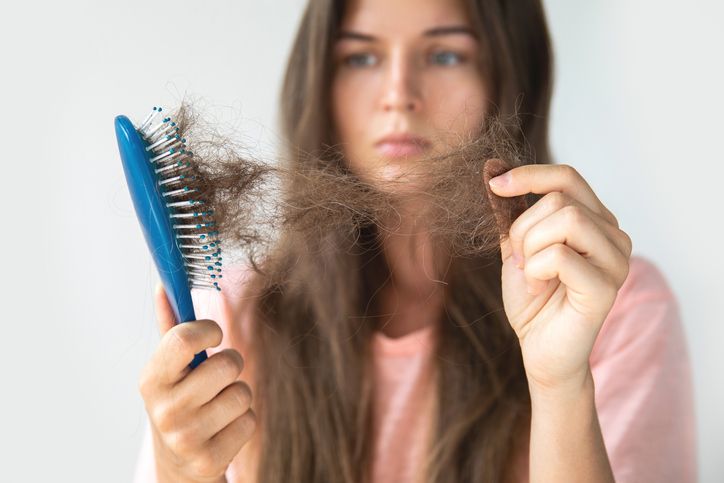
Otherwise, all of your hair would fall out at once since each hair follicle is independent and goes through the growth cycle at various periods. Instead, you only lose between 80 and 100 hairs every day on an average head of hair. When your growth cycle is disturbed, you may have hair loss, thinning hair, and issues with hair development. Conditions including metabolic abnormalities, sickness, or poor diet can cause this.


4
Hair Loss Treatments - Laser treatment
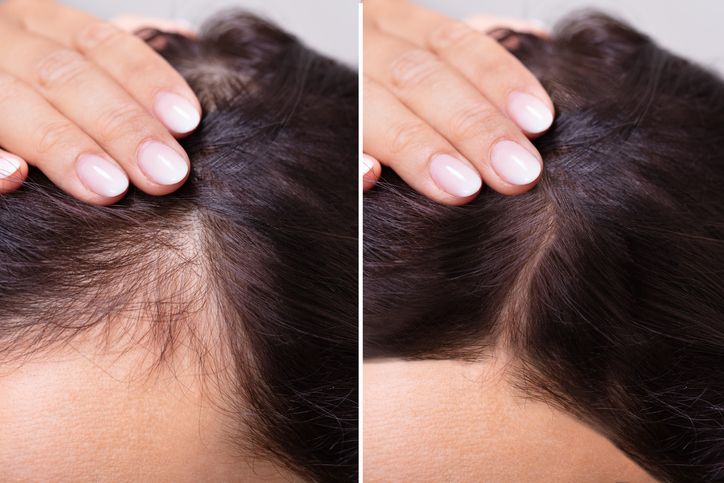
F8 Hair Regrowth Treatment
F8 is a non-invasive procedure that promotes the health of the hair and scalp. A hair development serum with low laser energy sweeps across the scalp to activate dormant hair follicles and fortify the hair papilla. The healing of the capillaries and promotion of their microcirculation by the energy and serum also aids in supplying nutrients that energise the hair follicles. You will notice an improvement in hair volume and quality after the treatment.
What can you get from this treatment
Non-Invasive: F8 is a very safe, non-invasive method of treating hair loss. The scalp skin is evenly covered by the soft laser energy.
Increasing Blood Flow: Hair papilla, capillaries, and hair follicles can all be strengthened by the F8 low-energy laser.
Scalp Care: A hair growth serum injection can deep-cleanse the scalp to lessen sebum production and can also unblock hair follicles to boost hair growth and improve scalp health.
For Both Ladies and Gentlemen: For both women and men with hair and scalp issues, F8 is a very safe hair and scalp therapy.
How does this treatment work?
Step 1: The client's hair loss condition is investigated by a professional hair expert. The professional uses a 200-fold magnification to assess the health of the scalp and hair follicles. The specialist then verifies the client's hair loss degree and affected locations. The aesthetic therapist then goes into great detail about F8's idea and process. The low-energy laser will also be tested on a patch by the therapist.
Step 2: The therapist distributes low-energy lasers across the scalp using the device's handpiece. It's not surgery in this step. The hair papilla and hair follicles inside are stimulated. Additionally, the capillaries in the area get stronger, allowing for a proper microcirculation of nutrients. The end effect is a scalp and hair follicles that feel healthier.
Step 3: After the low-energy lasers are released, the therapist uniformly spreads the top hair growth serum over the scalp. Simple serum absorption is made possible by the laser radiation. The hair growth serum cleans the scalp, clears the pores, and moisturises the scalp, which reduces sebum production and creates a favourable environment for hair growth with a balanced water-oil ratio. The method promotes hair growth.

Book Now to Experience
F8 Hair Regrowth Treatment
1 Minute Self-Registration
Date should not be before minimal date

5
Hair Transplants

It's a kind of surgery where the hair that you already have is moved to cover bald or sparse areas. The procedure is often performed in the doctor's office. The surgeon will first clean your scalp and provide anaesthesia to numb the back of your skull. Follicular unit extraction (FUE) or follicular unit strip surgery (FUSS) are the two techniques your doctor will use for the transplant. A 6- to 10-inch strip of skin from the back of your head is removed by the surgeon during FUSS. The scalp was closed by sewing, and it was laid aside. The hair around it rapidly conceals this spot.
The surgical team then separates the strip of scalp that was removed into 500 to 2,000 microscopic grafts, each containing one or a few hairs. The surgeon then cleans and numbs the area where the hair will grow, makes holes or slits with a scalpel or needle and carefully inserts each transplant into one of the holes when they have been prepared.
Risks or side effects of this method
Transplants have some risks, including bleeding and infection, much like any type of surgery. Additionally, scarring and unnatural-looking new hair growth are both potential side effects. During the time the new hairs begin to form, some people experience folliculitis, an infection or inflammation of the hair follicles. Compresses and antibiotics can help with the issue. Shock loss is also another possible risk, when you suddenly start to lose some of the old hair in the place where you obtained the new strands. But it usually doesn't last forever.


6
Medications
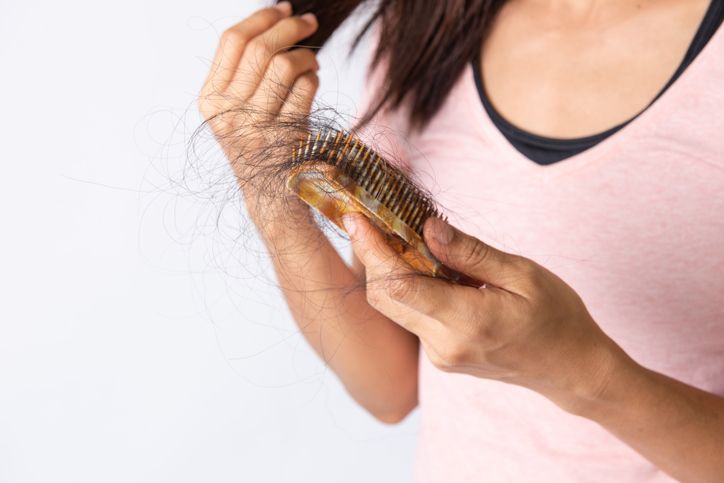
Minoxidil
Minoxidil is an FDA-approved over-the-counter medication for hair loss which is best known by its brand name Rogaine. Minoxidil, when administered directly to the scalp twice daily, may progressively thicken hair where it is balding. Rogaine results can be seen after up to 16 weeks of use. Consistent use of the product is crucial if you want to see benefits of regrowing hair. Depending on your preference, the solution is offered in either liquid or foam form.
Finasteride
A drug for hair loss with a prescription is finasteride (Propecia). Males who experience hair loss can take this medication daily instead of topical remedies like minoxidil.
Because this medication may cause major negative effects during pregnancy, anyone who intends to become pregnant or who are nearing menopause should avoid taking it. However, research has indicated that it may be a useful treatment for postmenopausal women, and some doctors routinely recommend it.
Corticosteroids
Inflammation-related disorders are treated with corticosteroids by prescription. Inflammatory disorders can occasionally result in a number of symptoms, including hair loss. By reducing inflammation at its source, which is your hair follicles, prescription corticosteroids may be helpful in certain circumstances. Every 4 to 8 weeks, a dermatologist may inject corticosteroids directly into the scalp or apply them topically depending on how severe the hair loss is.

7
Vitamins
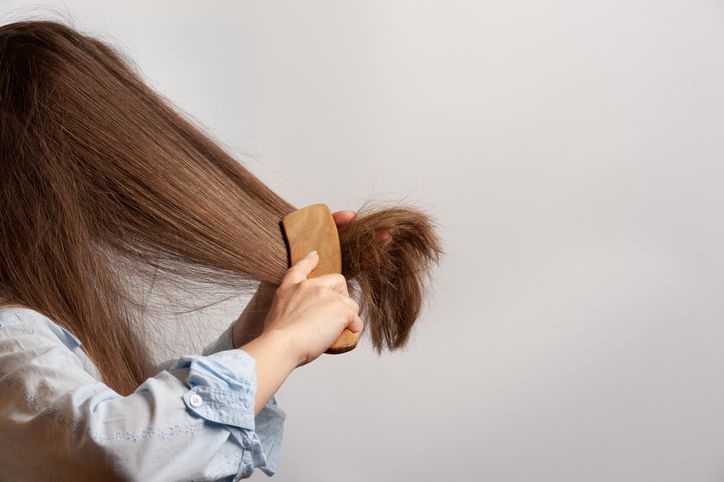
Folic acid supplements
A kind of vitamin B called folic acid is crucial for the development of new cells. According to a few studies certain types of hair loss may be related to folate insufficiency. But much like with multivitamins, there isn't enough proof to say that folic acid will definitely decrease hair loss or contribute to thicker hair.
Biotin
Foods like almonds, lentils, and liver are all naturally high in biotin, often known as vitamin B7. It's unlikely that you have a biotin deficiency if you maintain a healthy diet. However, the popularity of supplemental biotin has increased recently, in part because of advertisements that highlighted how these pills will provide consumers more energy and greater hair growth.
There is little proof that biotin can treat thinning hair, despite the fact that it aids in the breakdown of enzymes in your body.
Omega-3 and omega-6 fatty acids
Essential fatty acids are omega-3 and omega-6 fatty acids. This is because the human body is unable to produce them. Your body uses omega-3 to fight inflammation, which is a major factor in many diseases. Inflammation may also contribute to premature hair loss. Contrarily, omega-6 is crucial for maintaining the health of the entire epidermis, which may be advantageous for the scalp.
Omega-6 fatty acids are primarily found in plant-based oils, whereas omega-3 fatty acids can be found in fish and some seeds. If you don't typically eat these foods, discuss taking a supplement with your doctor.


8
Lifestyle Change
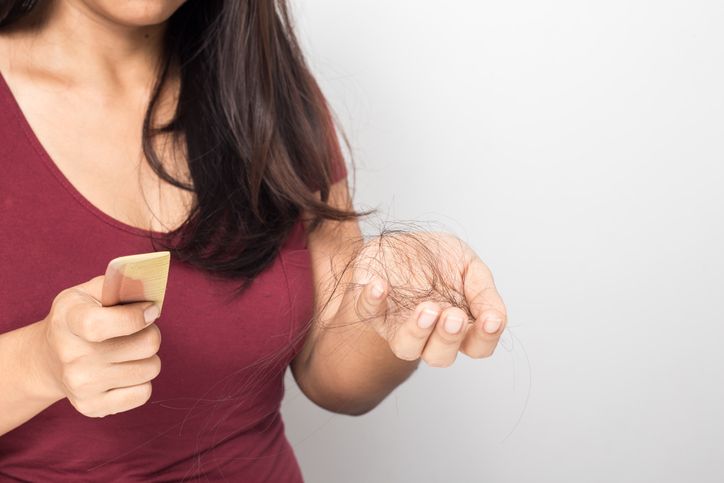
Oiling
Naturally, oiling enhances blood flow and nourishes the roots. Make sure to massage your hair with oil designed for your scalp once a week to stimulate hair growth. After two hours, cover it with a shower cap and gently shampoo it off.
Get Trims Frequently
The tips of the hair are typically where it is most damaged, so getting a nice trim every six to eight weeks can assist. Split ends can be removed and damaged hair can be trimmed short to encourage hair growth.
Fitness and Diet
Whatever product you use, if you don't have a balanced diet and exercise, nothing will ever prove to be worthwhile. Make sure you consume plenty of protein and iron each day. Yes, crash diets might be your hair's worst enemy. Yoga and meditation are excellent alternatives to exercise for reducing hair loss.
Shampoo
It is crucial to first recognise your scalp type and select the appropriate shampoo. Additionally, depending on your scalp condition, you can choose to shampoo your hair once or twice in a week. For instance, over-washing hair with a dry scalp or failing to wash oily locks three times each week can contribute to hair loss.
Additionally, check to see if the shampoo contains sulphates, parabens, or silicone, which can weaken your hair and increase the risk of breakage.

Book Now to Experience
F8 Hair Regrowth Treatment
1 Minute Self-Registration
Date should not be before minimal date

9
Conclusion

There are many reasons for hair loss. Finding the root cause of hair loss can be really helpful in finding the suitable treatment to treat hair loss. With countless types of hair loss treatment that are available out there, you can always find the right one for you. Talk with your doctor to get more opinions and suggestions regarding your problem.
FAQ
Is there a difference between hair loss in men and women?
Androgenetic alopecia, male pattern hair loss, which is brought on by hormones and heredity, can affect both men and women. In reality, hair recession towards the temples and the emergence of the recognisable M-shaped hairline can be early signs of male pattern baldness. On the other hand, diffuse thinning at the top of the head, which is visible at the portion line, characterises female pattern hair loss. Due to hormonal fluctuations and ageing, diffuse thinning can start as early as the 20s and 30s.
Is it possible for hair transplant grafts to fall out?
After hair transplantation, it is normal for a few hairs to fall out. Sometimes, without harming the grafts themselves, temporary hair loss or breakage might result from a scab flaking off. Remember that the grafts must be physically removed in order for them to become non-viable because they are firmly entrenched under the skin. It's also crucial to keep in mind that it's quite rare that the dermal papilla or the follicle, which are essential components of hair, will fall out.
What distinguishes hair weaving from hair transplants? Which form of treatment should I choose?
In order to provide the appearance of longer or thicker hair, people may weave their own hair, which is the superficial attachment of synthetic or human hair to their natural hair. Hair transplantation is the surgical removal of a person's own hair grafts from their scalp and placement of those grafts in an area where hair is missing.

Book Now to Experience
F8 Hair Regrowth Treatment
1 Minute Self-Registration
Date should not be before minimal date
Recommended Articles
COPYRIGHT© NEW BEAUTY MANAGEMENT LIMITED 2025. ALL RIGHT RESERVED.



